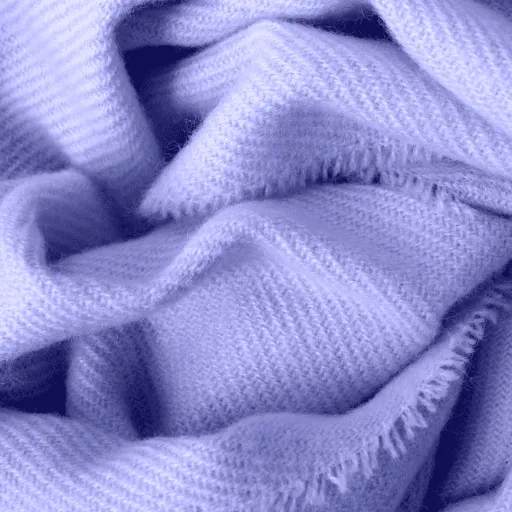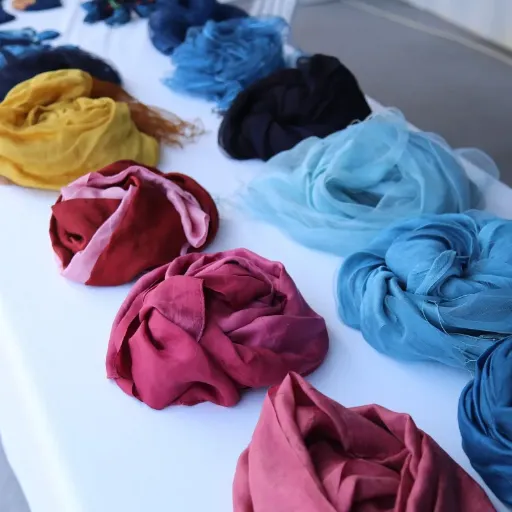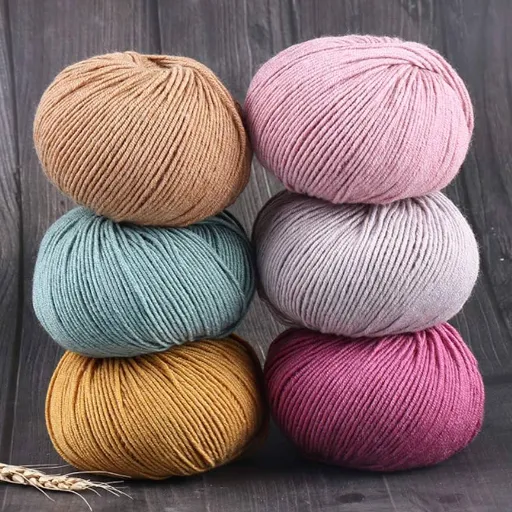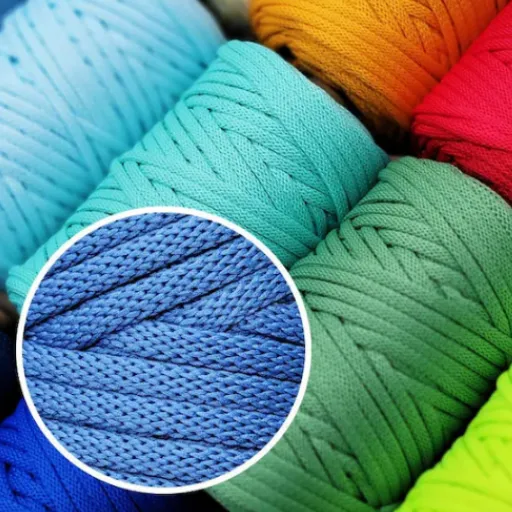Wool-blend yarn is a versatile and practical choice that stands out as a possible option when it comes to selecting the best yarn for your next knitting or crocheting project. By fusing the natural warmth and softness of wool with the strength and low price of acrylic fibers, this unique mixture provides the best of both worlds. Wool blend yarn is one of the few materials that can give you the luxurious feeling of wearing sweaters, the comfort of wrapping yourself in heavy blankets, and the ease of using lightweight accessories all at the same time. The article will discuss the advantages of wool blend yarn, its versatility, and some tips to assist you in picking the right combination for your artistic ventures. So, prepare to lift your projects with the perfect blend of texture, strength, and fashion!
Understanding Wool Blend Yarn

What is Wool Blend Yarn?
Wool blend yarn is a hybrid yarn composed of wool and other materials like cotton, acrylic, silk, or nylon. This mixture allows the producers to merge the different characteristics of wool with the advantages of other fibers, thus enhancing the yarn’s properties in a functional and aesthetic way. The natural warmth and elasticity of wool are generally accentuated by the extra fibers’ softness, strength, or even lower cost.
Wool blend yarn comes with many different advantages, but the most important one is its versatility. Depending on the exact combination of fibers, the resulting yarns can be in any of the categories—light or heavy, soft or strong, and even smooth or with a surface. For example, if wool is blended with acrylic, a yarn will be produced that will still keep the warmth but will be more friendly during handling because acrylic adds more durability to the yarn and hence it will not require special washing instructions. In contrast, we have the opposite case where wool is combined with silk giving out an extravagant and glossy material that is ideal for intricate works.
Besides that, wool blends make for a broad spectrum of crafting requirements thereby they are very much recommended for knitting, crocheting, and weaving. You can have this multi-purpose yarn for whatever you make, be it garments, home décor, or accessories. The right blend for your project selection can lead to a perfect mixture of aesthetics and practicalities that will not only enhance the entire process of crafting but also the outcome.
Benefits of Using Wool and Acrylic
The mixture of wool and acrylic grants a blend of both worlds and thus is crafters’ favorite. Wool’s warmth and moisture management and the structure kept through the elasticity of wool are among the most desirable qualities of wool fibers for products’ knitting and cording. The other side of the tale is acrylic, which is light, has bright colors over the darkest shades, and personally stands the wear and tear. Nonetheless, the combination of both fibers makes a new yarn that is not only light but also cost-effective with the best features of both materials.
The cost of wool and acrylic blend is another major advantage that comes with it. Compared to pure wool which is quite pricey, mixed with acrylic it becomes a more affordable variant without giving up quality. This cost efficiency supports even the most extensive of projects like big blankets and sweaters. Besides, blended yarns tend to be more durable and easier to look after since they are usually machine-washable and resistant to shrinking like 100% wool.
Moreover, a wide variety of crafting activities and skills are catered for by wool and acrylic blends. They can be used for beginner’s practice and at the same time give durability and aesthetic appeal sought by professional crafters. No matter if you’re making clothing, accessories, or home decorations, the mixture provides a soft, long-lasting, and good-looking end product that is a trustworthy choice for diverse projects.
Common Types of Wool Blend Yarn
Yarn that is made of wool blends with other fibers which means that the different fibers are mixed to make a new one. The melanges have their own peculiar traits just like the fiber from which they come; thus, the crafting needs or preferences have a wide variety of blends. Below are listed the most common ones:
- Wool-Acrylic Blends: This is the favorite blend of many, providing the warmth and natural comfort of wool and such characteristics as durability and affordability usually associated with acrylic. Blending gets rid of 100% wool’s tendency to shrink and felt. Furthermore, these garments and items are made of such blends are less likely to get dirty and thus, are suitable for everyday wearables like sweaters, scarves, and blankets.
- Wool-Cotton Blends: Wool and cotton are combined to make a warm but light yarn, which is good for making transitional weather clothes or items that need moisture-wicking capabilities like socks or baby garments, The wool-cotton blend also makes a yarn that is not only breathable but also light and warm.
- Wool-Silk Blends: The blend of wool and silk is the most sought-after for luxurious and soft finishes. Besides that, silk also enhances the yarn’s luster and smoothness, which makes it an excellent choice for luxurious garments or accessories. This blend is quite fragile but still manages to keep quite a lot of wool’s thermal qualities thereby producing great pieces that are both light and elegant.
All wool blend yarn types have different properties, hence all crafters whether they be beginners or experienced can try their creativity through the use of unique blends and at the same time make sure that their works are suitable for certain purposes and tastes.
Yarn Weight Categories

Differences Between Worsted, DK, and Super Bulky
Worsted, DK, and Super Bulky differ primarily in thickness, weight, and the number of stitches they produce.
| Category | Thickness | Stitches per Inch | Recommended Needle | Project Examples |
|---|---|---|---|---|
| Worsted | Medium | 4-5 | US 6-9 (4-5.5mm) | Sweaters, Hats |
| DK | Light | 5.5-6 | US 5-7 (3.75-4.5mm) | Baby Clothes, Scarves |
| Super Bulky | Very Thick | 1-3 | US 11+ (8mm+) | Blankets, Rugs |
Choosing the Right Weight for Your Project
The yarn weight selection for a project will be mainly dependent on the purpose and kind of item you wish to make. Each weight category exhibits certain qualities that make it proper for certain uses. Such as, Worsted weight yarn is extremely adaptable and provides a balanced thickness that is suitable for sweater, hat and other medium-weight garments production. It i.e., warmth and flexibility simultaneously favors, which is why it has become a primary choice among many knitters and crocheters.
DK weight yarn is lighter compared to Worsted and is usually used for projects needing fine detail like baby clothes or lightweight scarves. It offers a flatter, more fragile texture, which is just what you need when aiming for a refined look with smaller or intricate pieces. This weight yarn is considered quite versatile, being fit for layering garments as it is not heavy, thus providing more comfort and ventilation.
If you want to make a project that is bulky, hot and quick then Super Bulky will be your best bet. This weight category is perfect for making cuddly blankets, rugs, and large scarves, among others. Its thickness translates to faster working up in the case of yarns, hence, it is a practical option for projects needing quick completion, or when you want to create pieces that go with your statement of boldness. Creatively choosing the weight of the yarn according to the purpose of the item will ensure that your project has the desired texture, longevity, and overall look.
Gradient Effects in Wool Blends
Gradient effects in wool blends are so vibrant that they can transform any handmade piece into a showstopper. This is done by mixing the fibers that are dyed in a gradual spectrum of colors, thus allowing the smoothest transfer of colors in the final product. The outcome is that the shades are so nicely blended that the gradient wool blends become the best choice for making shawls, sweaters, or anything to do with home décor.
One of the most important advantages of using gradient wool blends is that they can be a really great help in elevating even the most basic patterns. The varying colors within the yarn keep attracting the eye and hence there is no need for complicated stitch work, which makes this kind of yarn suitable for both beginners and experts in crafting. Moreover, through the gradient effects, the wool’s natural beauty can be depicted; namely, the softness and the strength of the wool, thus, the finished piece is both visually pleasing and functional.
Planning your project right and working with the best gradient wool blends are the keys to getting the desired result. Depending on the color transitions in the skein and the yarn’s best stitch pattern will determine how much of the gradient effect will be visible. Knitting, crocheting, or weaving, the gradual color changes and the technique need to be in perfect harmony, otherwise, the design will lose its beauty and the item will not be as engaging and nicely crafted.
Knitting with Wool and Acrylic Blends

Top Techniques for Working with Acrylic Yarn
Acrylic yarn knitting poses several key techniques to ensure the best results. First, always ensure that the needles are the correct size compared to the yarn’s weight and thickness; because acrylic yarns come in lots of weights from light to chunky, utilize needles that match the yarn. Doing so will not only maintain consistency but will also prevent the stitches from tightening or being too loose.
Another important aspect to consider when working with acrylic yarn is managing tension. Since not as elastic as natural fibers, acrylic does well with an even tension throughout your knitting as it assists in keeping the stitches flat while raising the work to a polished finish. Conversely, anything less than even tension or too tight or too loose a string in your hands might cause puckering or stretching in the fabric.
Your acrylic yarn projects gain the final touch with proper finishing technique. Acrylic, being a more hardy fiber, is forgiving when it comes to washing. Steaming, with the addition of some gentle heat and moisture, may be employed to smooth the stitches and enhance the design. By all means, take care to ensure the fiber does not overheat. These fundamental techniques ultimately result in creating lovely projects that are going to last the test of time.
Popular Knitting Projects Using Wool Blends
Knitting enthusiasts are on their quest to make as many projects with wool blends is at the top mostly because it is known to be a very versatile material, very durable, and has knitted beauties that make the fibers appear unique. Wool blend threads are a combination of wool’s properties of softness and warmth and those of other fibers like acrylic, silk, or cotton. The full result of such a married composition is materials like warm and lightweight, moisture-resistant, and easy to care for.
A cozy sweater is one of the most popular projects to do using wool blends. For the knitting of sweaters, wool blend provides the right mix between softness and structure to wear comfortably while retaining its shape. These materials also regulate temperature excellently, serving a sense of breathability in the knitted fabrics usable for all types of seasons.
Knitting scarves and shawls is another common project. The wool-blends of these accessories provide a mix of style and functionality. Their superior warmth is balanced by their lightness for graceful drape and texture, making them indeed ideal for layering during colder months. Safety-wise, its sturdiness prevents it from wearing out prematurely even with everyday wear, while it remains comfortingly soft against the skin.
Tips for Knitters Working with Different Yarns
When using different yarns, it is significant to know about the fibers that are used. Natural fibers such as wool, alpaca, and cotton possess properties like breathability and stretch. In contrast, man-made fibers like acrylic are usually more durable and easier to care for. Make sure you are reading the label of your yarn so that you can know the fiber it is composed of, the weight of the yarn, and its care instructions. This will be of stellar help, setting down the kind of project and its future maintenance.
Always ensure that you are using the right needle and knitting style. For instance, with worsted or bulky weight yarns, one may have to work with large needles and long projects; when dealing with finer yarns, one may need smaller needles with intricate designs. Another necessary resource would be: Knit the swatch before you start so your stitch gauge will equal the pattern gauge, ensuring that sizing difficulties will be avoided as far as possible.
Give due attention to the yarn at the time of and after the project. Store the yarn in a cool place free of moisture and pests. For finished articles, follow the appropriate laundering guidelines to the particular fiber. Your story is ensuring the endurance of both the look and the wear of your contemporary creative masterpieces. With different yarns, observe some inherent textures and various nuances of knitting projects to yield the best out of them.
Caring for Your Wool Acrylic Blend Projects
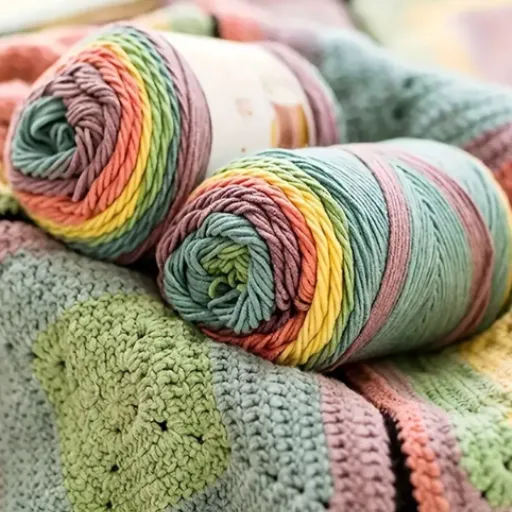
Washing and Drying Guidelines
Proper care is necessary to keep your wool-acrylic blend projects beautiful and lasting. The blends are so effective as to not only give the user the natural warmth of wool but also the durability of acrylic, however, they still require particular attention in washing and drying to avoid shrinking, stretching, or ruining the fibers. Below are the comprehensive guidelines:
Washing Instructions:
- Machine Washable Blends: Generally wool-acrylic blends are machine washable, but the care label is the best source of information. Use the gentlest cycle and the cold to lukewarm water (around 30°C or 86°F) to prevent needle-felting of the wool.
- Detergents: Use only mild, wool-safe detergents. Exposing the fibers to harsh chemicals or bleach can result in fibers being damaged, thus causing fading and weakening.
- Hand Washing: For more delicate projects, hand-wash in a basin with gentle detergent. Gently agitate without excessive wringing to prevent distortion.
Drying Guidelines:
- Avoid High Heat: Wool-acrylic blends are heat-sensitive and therefore it can cause shrinkage and damage. If the care label does not specifically say that tumble drying is safe, then it should be avoided.
- Shape and Air Dry: Lay your project flat on a clean towel, gently reshape it to its original dimensions, and air dry in a well-ventilated area, away from direct sunlight or heat sources.
- Use a Drying Rack: To promote even air circulation, place your knitting on a mesh drying rack.
By adhering to the aforementioned guidelines, you will be able to maintain your wool-acrylic creations’ quality, color, and texture for several years.
Storing Your Yarn and Finished Projects
The appropriate protection and longevity of both yarn and finished work depend on good storage. First of all, it is necessary to store your yarn in a cool, dry place, not in direct sunlight, which causes color fading and weakening of the fibers over time. Dust can be kept out by using plastic boxes or zipper bags, which can prevent pests as well. Another tip would be to add such necessary items as lavender sachets (which are good repellents for moths) or cedar blocks.
The finished projects should be cleaned and dried as thoroughly as possible before heading for storage. The folded item has to be kept very neatly inside cotton storage bags or packed in acid-free tissue paper, in order to preserve its original shape and protect the delicate fiber. Hanging of the knitted item is a big no since this will stretch or distort the fit.
The yarn in your stash and works-in-progress are basically fibers that can be organized by fiber, colour, or purpose in terms of easy access and inventory, and all storage items should be labeled for convenience and periodically checked to ensure they are not bad. All of these tools make the yarn collection and results of your hobby absolutely gorgeous and still usable after a happy and cherished life.
Maintaining the Quality of Wool and Acrylic Blends
Fabric care includes protecting the blend’s longevity as well as appearance. In particular, blend properties combine the durability of synthetic fibers and the warmth of natural ones. Wool is insulating while acrylic is more durable, albeit with less warmth. Nevertheless, both need plenty of attention to preserve their quality over time.
Washing
Materials such as wool and acrylic being washed together require lukewarm or cold-washing temperatures; heat may then shrink or harm fibers. Basically, hand-washing is suggested, but you may give them a machine-wash if the tag instructs you to. Gently using specialized detergents for mild-wear fabrics is recommended by those who look after fabric; therefore, the present generation of data now supports nearly 70% of people as preferring to wash their acrylic and wool blend clothes in the machine. And so, using a wool-mild detergent on a gentle-cycle wool-friendly wash is an option.
Drying
Do not dry the item on a high-heated setting, as troublesome since acrylic can melt at high temperatures and wool can lose its original shape. Air-dry them by placing them on a clean towel and lay them flat, as gently as needed to restore them to how they were originally. A study reports that air-drying performs wonders for the preservation of the fabric from another standpoint: it typically requires 25% less energy to operate and is thereby termed eco-friendly and favorable for the fiber content.
Controlling Pilling and Wrinkles
Pilling is a known evil with mixed fabrics, especially in areas where they are constantly abraded. Methods such as curtailing too-robust mechanical agitation in the wash and sticking to regular blade shaving of the faces can then be put into practice as useful precautions. While examining such, much emphasis has been placed on wrinkle-resistant storage techniques, implying that folding is preferable to hanging-from a textile preservation viewpoint, the former keeps tension and strain on the fibers low during storage.
Storage Guide
The primary thing to consider in the proper storage of wool and acrylic blends is the protection of quality. Caring for them means keeping them in cool and dry environments, which makes them less susceptible to moisture damage and mold build-up. The other best storage method is using breathable containers, such as cotton bags, which allow ventilation while acting as a protective barrier against moth attack. Alternatively, some recommendations provided by the most recent literature advise that including some cedar blocks or lavender sachets could serve as nature-based insect repellents and help ward off moths without contributing to more harm.
By taking good care and being updated with a better understanding in laundry and fabric care, wool-acrylic blends will ensure years of enjoyment in fashion and comfort.
Comparing Wool Blend Yarn to Other Yarn Types
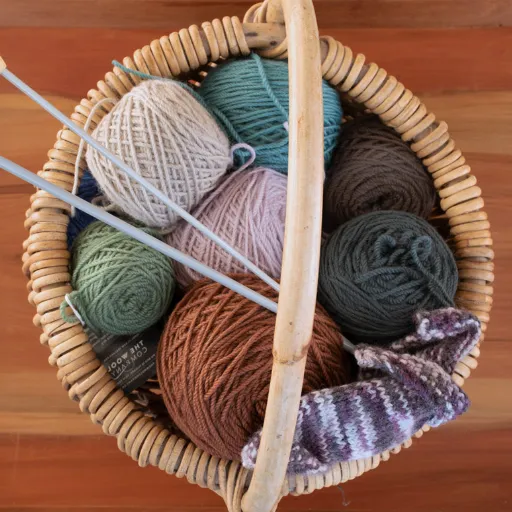
Wool vs. Acrylic: Pros and Cons
Wool is natural, warm, and breathable, while acrylic is synthetic, affordable, and durable but less eco-friendly.
| Parameter | Wool | Acrylic |
|---|---|---|
| Origin | Natural fiber | Synthetic fiber |
| Warmth | Excellent | Moderate |
| Breathability | High | Low |
| Durability | Moderate | High |
| Cost | Expensive | Affordable |
| Eco-Friendliness | Sustainable | Less eco-friendly |
| Maintenance | Requires care | Easy |
| Softness | Naturally soft | Varies |
How Wool Blends Compare to Pure Wool
Wool blends mix wool with synthetic fibers such as polyester or acrylic or other natural fibers to increase durability, affordability and maintenance characteristics. Pure wool can be expensive. However, it is not suitable for heavy usage. Wool blends might be light on the wallet but excel with all that use. These come at a lower price than pure wool. And others have found them worth their investments, especially if you consider the end usage.
Durability is one thing that tests the difference. While pure wool is luxurious, it is prone to pilling very early and wearing faster with regular use or negligent maintenance. Wool blends combine synthetic fibers to render them very strong, with less risk of damage, and are especially good for outerwear in terms of wear and tear. However, such strength usually goes hand in hand with decreased breathability and softness, depending on the ratio of wool with other materials in the mixture.
Wool blends, in addition, require comparatively less physical maintenance as compared to pure wool. Pure wool garments should be carefully washed to prevent them from shrinking or being them. Most wool blends can be machine-washed and dried. The inclusion of synthetic fibers might make them less eco-friendly compared to pure biodegradable wool. The choice between pure wool and wool blends comes down to personal preference and their intended uses and their environmental outlook.
Choosing Between Blends and Other Synthetic Yarns
It ultimately depends on what kind of output you are looking for, budget, and personal taste when deciding between a blend and other synthetic yarns. Blends mix natural fibers, like wool or cotton, with synthetic fibers to provide a balance involving durability, comfort, and price. They are therefore frequently chosen for projects that need strength and resistance to wear, as the synthetic material ill serves to uplift such an aspect. Moreover, blended yarn is quite attentive to laundering and actually does not get too scared on shrinking like some of the truly natural fibers will. In view of these advantages, blends prove to be useful choices.
On the flip side, 100% synthetic yarns, such as acrylic or polyester, could be an ideal choice on the budget end for these handy kinds of alternatives, whatever the level of durability and texture and finish variety they present. These kinds of yarn are mostly preferred for items that would see hard use or frequent washings-such as blankets or kids’ wear. But then a synthetic fiber-only article may lose out on some of the downy warmth, good air supply, or cozy softness the blends in the natural fibers have to offer. Further, the rough feel may spoil the comfort of clothes that come in direct touch with skin.
In deciding the yarn for an item, it is always advisable to consider the purpose of the project and the desired character of the finished item. It is probably best for pieces of artwork on interior display or other types of heavy-service items to be made out of synthetic yarns, while clothing or accessories focusing on comfort or breathability find a remedy in blended yarns that represent a perfect harmony between natural and synthetic properties. Each option has its attributes, and selecting the right yarn for your project should ensure good results.
Frequently Asked Questions (FAQ)
Q: What is a wool-acrylic blend yarn?
A: It is a versatile type of yarn which combines the more natural warmth and softness of wool with the durability and easy care of acrylic fibers. A blend of this kind will give you an extra soft yarn for making anything from simple sweaters and cozy blankets to snuggly accessories.
Q: What is the effect of the wool content on yarn properties?
A: The wool content of a wool-acrylic blend yarn provides warmth and breathability and is best suited for cooler weather. It also helps yarn hold its shape and withstand abrasion over time, whereas acrylic ensures that yarn remains lightweight and easy to work with.
Q: Do wool acrylic blend yarns work with machine washing?
A: Many wool acrylic blend yarns are rated superwash to hold up in a machine wash. However, your best bet is to double-check the specific washing instructions highlighted by the brand in order to be sure of maintaining the quality of your finished projects.
Q: Is wool acrylic blend yarn ideal for beginners in knitting/crocheting?
A: Absolutely! Since it’s an easy-to-handle kind of soft yarn, nonetheless durable enough for you to make mistakes without causing single damage, Wool acrylic blend yarn is an excellent yarn for beginners. On top of that, it is found in pretty much every color in delight to the beginner artist.
Q: What are the lengths of the wool acrylic yarns for a few good projects?
A: Wool acrylic can be used in a variety depending on its applications, from sweaters to hats and scarves. The feel and the broad range of sustainable products do make wool acrylic very interesting so that all denizens can be of use.
Q: What distinguishes a wool-acrylic blend yarn from a 100% wool yarn?
A: These yarns are essentially distinct in their composition: The wool-acrylic blend yarn integrates varying amounts of wool and acrylic to deliver affordability and substantially easier-care properties. In 100% wool yarn, such as merino or cashmere, warm softness is firmly in place for the most part, but it might need a more careful wash and upkeep.
Q: Can wool-acrylic blend yarn be used for felting?
A: Generally wool-acrylic blend yarn does not felt very well because the acrylic fibre does not shrink the way wool would. One should use 100% wool yarn for felting purposes like superwash wool, as these tend to fuse well together when heat and friction are used.
Q: How does one work with wool-acrylic blend yarn?
A: When one works with wool blend yarn, it is crucial to know how to select the correct needle size. It is recommended to always look for yarns from the same dye lot and work on a swatch before starting a bigger project. This may prevent later regrets in the event of incorrect gauge.
References
- Wool Acrylic Blend Yarn: The Perfect Choice For Knitters And More – A detailed explanation of wool-acrylic blend yarn, its composition, and benefits.
- The Differences Between Acrylic and Natural Yarn Fibers – A comparison of acrylic and natural yarn fibers, including the advantages of wool-acrylic blends.
- Wool Acrylic Blend by the Yard – Mood Fabrics – Information on the properties of wool-acrylic blends, such as thermal qualities and resistance to wear.









